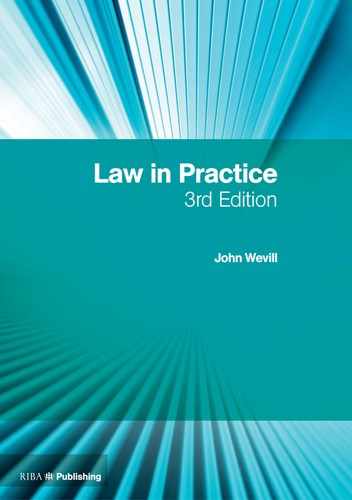Book Description
Intensely practical and clearly written, Law in Practice: the RIBA Legal Handbook is the RIBA’s jargon-free, professional guide to the law as it relates to a construction project.
It addresses all the fundamental, up-to-date issues of contemporary construction law, allowing architects to make sound judgements, avoid disputes, and run projects on a safer basis. This new edition has been fully updated to reflect the new RIBA Plan of Work 2013 – the industry’s framework for construction projects – as well as recent case law and other legal updates that the practising architect needs to be aware of.
Why does an appointment need to be written? Why does language matter? What is a novation? What does an overall cap on liability mean, and how can you convince a client to agree one? How do you assess an extension of time? When should you notify your insurer of a potential claim? Law in Practice answers all of these questions and many more.
Table of Contents
- Cover
- Title
- Copyright
- Preface
- About the author
- Contents
- 01 General principles of English construction law
- 02 The laws of contract and tort
- 03 Professional appointments generally
- 04 Standard forms of professional appointment
- 05 Bespoke professional appointment wording
- 06 Collateral warranties, third party rights and novation
- 07 The architect's role within a construction project
- 7.1 The relationship between the architect and the client
- 7.2 The architect's services
- 7.3 Strategic Definition, Preparation and Brief: RIBA Stages 0 and 1
- 7.4 Concept Design and Developed Design: RIBA Stages 2 and 3
- 7.5 Technical Design: RIBA Stage 4
- 7.6 Construction and the architect's duty to inspect: RIBA Stage 5
- 7.7 Handover and Close Out, and In Use: RIBA Stages 6 and 7
- Chapter summary
- 08 The role of the architect in relation to the building contract
- 09 Professional indemnity insurance (PII)
- 10 Disciplinary proceedings and dispute resolution
- Table of cases
- Table of legislation
- Glossary
- Further reading and resources
- Index
